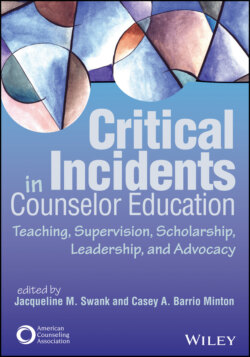Читать книгу Critical Incidents in Counselor Education - Группа авторов - Страница 34
2014 ACA Code of Ethics Standards Addressed
ОглавлениеF.9.a. Evaluation of Students
G.5.b. Plagiarism
G.5.c. Acknowledging Previous Work
• • •
Professor P was a first-year faculty member at a local college in a city environment. While grading for the Multicultural Counseling course, one paper struck Professor P as very familiar. The assignment was so impressive and of such high quality that their initial thought was that it could be published. Professor P did not have the software that allowed them to check for plagiarism. Rather, students submitted paper assignments during class. Although the content, language, and flow of the paper felt familiar, the fact that Professor P had received the assignment in this way made it feel new as well.
Professor P considered the student’s past in-class contributions and assignments while evaluating the suspicious assignment. It was clear that this assignment was not in the student’s voice. Unsure of how to move forward, Professor P started with a simple Google search using the most familiar sentences. Rather quickly, Professor P found an article that had been published in a well-known journal by a well-known author whom they had personally met at conferences in the past.
After finding the identical article via a Google search, Professor P emailed a request to the student to meet after the next class to talk about their submission. This was new territory for Professor P. Before meeting with the student, Professor P took several steps to build a plan of action for addressing the plagiarism. After notifying the department chair, Professor P printed out the original published article and the student’s paper for comparison. Professor P showed both the article and the paper submission to the student, addressing the plagiarism directly. During their meeting, the student shared that they did not understand the rules around plagiarism, noting that they were returning to graduate school after having an entirely different career and that writing these kinds of papers and citing in this way was foreign to them. The student asked Professor P not to report the plagiarism to the administration or fail the student in the course. The student offered to redo the assignment instead.
Because Professor P was teaching a graduate course, they had never considered teaching their students about plagiarism. Professor P thought plagiarism was something students already knew about. Plagiarism was something that could end the student’s college career. Professor P wondered whether there might be a technology gap based on age, socioeconomics, or limited access to technology (Burt et al., 2011). For Professor P, this kind of plagiarism meant the student needed to at least fail this assignment, which in turn meant they were going to fail the course. Professor P was clear with the student that although this was the first time the student had been found plagiarizing, failing the assignment was fair. Professor P moved forward with some discomfort, wondering what they could have done differently to prevent the situation.
